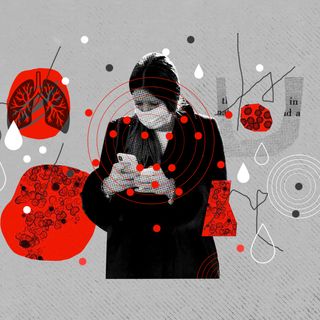Everyone’s been there. We have all seen a tasty bit of cuticle dangle off a nail and have chomped down upon it with the finesse of a caveman. It’s an extremely common and extremely gross habit, and I can’t seem to understand why we’d bite our nails like this. Neither can researchers, apparently.
Psychologists have had theories — the American Psychiatric Association counted nail-biting as a symptom of obsessive-compulsive behaviors, which remains controversial. Some mental health analysts and psychiatrists argue that nail-biting can be an obsessive-compulsive curse to some, but to others, an irrelevant, even pleasurable habit, which doesn’t put it under OCD’s usual diagnostic ambit; people suffering from OCD feel compelled to do such behaviors against their will.
Nail-biting is less commonly known as a body-focused repetitive disorder and even less commonly known as onychophagia. It manifests most commonly in teenagers as compared to children and adults. Sigmund Freud, the father of psychotherapy, thought of nail-biting as an oral fixation quite similar to smoking. Other researchers believed biting one’s nails was a sign of harm similar to pulling out one’s hair (trichotillomania) or picking at our skin (dermatillomania). Still others have theorized that the habit could be a symptom of anxiety and other psychiatric disorders, or a motor development problem.
Related on The Swaddle:
Why We Fidget: It’s a Coping Mechanism, Not a Sign of Boredom
More research has revealed that nail-biting might be related to boredom and perfectionism, rather than anxiety. In a 2015 study published in the Journal of Behavior Therapy and Experimental Psychiatry, those with body-focused repetitive disorders scored as extremely likely to overwork and plan down to the last minute and detail, often frustrating themselves. In another session of the study, researchers attempted to incite four emotions — stress, relaxation, frustration, and boredom — only to notice that participants continued to chew their nails throughout all emotional states, except the relaxing one. Researchers believed that when these participants were not relaxed, they utilized nail-biting as a way to do something rather than feeling like a failure while being unable to do anything.
Though there is still no definitive answer to why we chew at our nails and cuticles, there do exist ways to treat the behavior, especially considering its negative health consequences (think bacteria-related nausea and diarrhea, coronavirus and other infections, even warts). Recommended hacks include using gloves, bitter nail polish, manicures, bandaids, and even electric shock therapy to be rid of the urge. However, the most effective way to break the seeming addiction remains to identify the situation that is causing you frustration or stress, and changing it: The next time you’re trying to solve a big problem that frustrates you, maybe leave those cuticles alone and take your legs for a walk instead.




